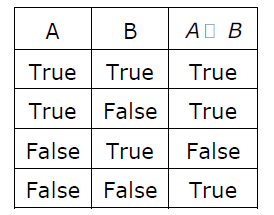GATE-CS-2006
Question 21
For each element in a set of size 2n, an unbiased coin is tossed. The 2n coin tosses are independent. An element is chosen if the corresponding coin toss were head. The probability that exactly n elements are chosen is:
Question 22
Let E, F and G be finite sets. Let X = (E ∩ F) - (F ∩ G) and Y = (E - (E ∩ G)) - (E - F). Which one of the following is true?
Question 23
F is an n*n real matrix. b is an n*1 real vector. Suppose there are two n*1 vectors, u and v such that, u ≠ v and Fu = b, Fv = b. Which one of the following statements is false?
Question 24
Given a set of elements N = {1, 2, ..., n} and two arbitrary subsets A⊆N and B⊆N, how many of the n! permutations π from N to N satisfy min(π(A)) = min(π(B)), where min(S) is the smallest integer in the set of integers S, and π(S) is the set of integers obtained by applying permutation π to each element of S?
Question 25
Let S = {1, 2, 3, ...., m}, m>3. Let x1, x2,....xn be the subsets of S each of size 3. Define a function f from S to the set of natural numbers as, f(i) is the number of sets [Tex]X_j[/Tex] that contain the element i. That is, f(i) = |{j|i [Tex]\\epsilon[/Tex] [Tex]X_j[/Tex]}|.
Then, [Tex]\\sum_{i=1}f(i)[/Tex] is :
Question 26
Question 27
Consider the following propositional statements: P1 : ((A ∧ B) → C)) ≡ ((A → C) ∧ (B → C)) P2 : ((A ∨ B) → C)) ≡ ((A → C) ∨ (B → C)) Which one of the following is true?
Question 28
Question 29
Question 30
For S ∈ (0 + 1) * let d(s) denote the decimal value of s (e.g. d(101) = 5). Let L = {s ∈ (0 + 1)* d(s)mod5 = 2 and d(s)mod7 != 4}.
Which one of the following statements is true?
There are 84 questions to complete.
Last Updated :
Take a part in the ongoing discussion


